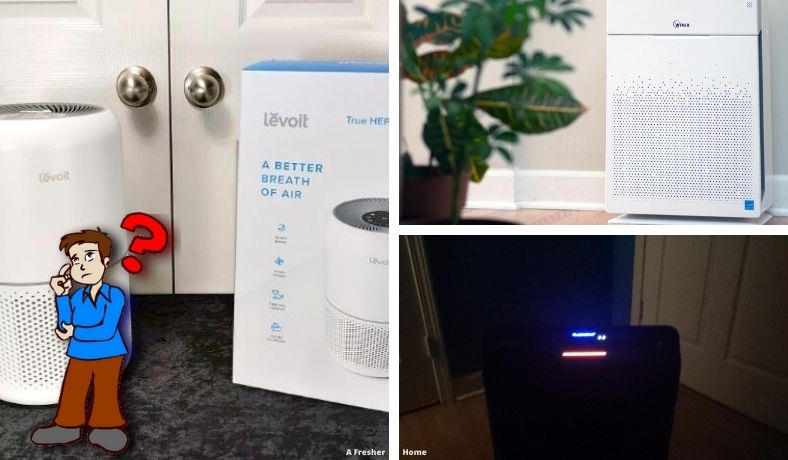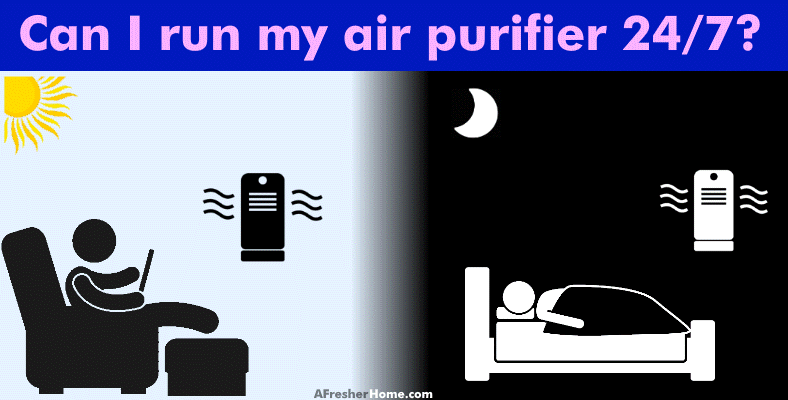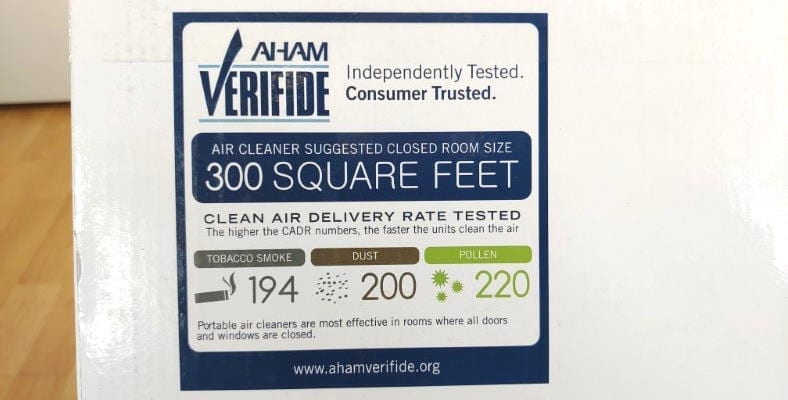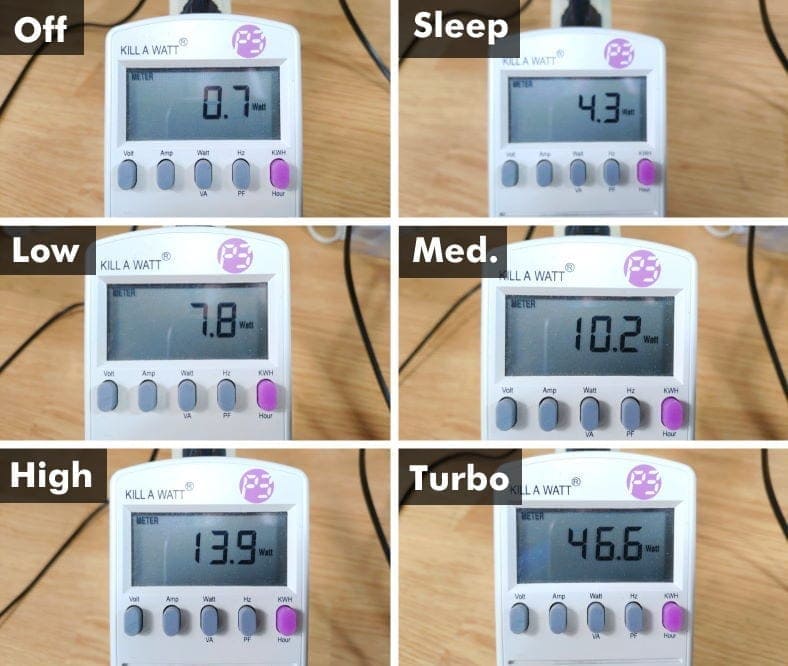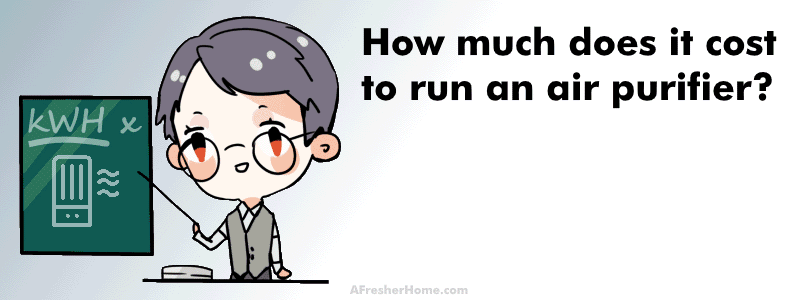Ever wondered how long you should (or can) run an air purifier? Can you leave an air purifier on all night or all day?
I’d love to help you get fresh air while answering this question and many more. In this article, I’ll cover some of the most common questions people have. Let’s get started!
Contents
Can I run my air purifier 24/7?
In the majority of cases, yes, you can run an air purifier 24/7 to keep your indoor air healthy & fresh. That’s because of how air purifiers work. There are a few side notes, however, that I’ll share with you.
Why you can run your air purifier for long periods of time
Air purifiers work by continuously filtering the air in a room, trapping airborne particles in their HEPA filter. That means in order to get clean, fresh air in your home you can leave an air purifier running to do its job. But how is that possible?
However, there are some things to know:
- Not everyone has the same clean air obstacle. For example, smokers have a much harder air quality problem to deal with which will take more time & an air purifier that performs well.
- When you first begin using an air purifier or an air quality problem happens again, you’ll need to give the purifier time to run on a higher setting (medium or high) to get the air back down to a fresher & more comfortable cleanliness level. Once that’s done it’s fine to leave it on a lower setting unless you need to change it.
- Under normal conditions, it’s often fine to leave a purifier continuously running on a lower fan speed mode once you are able to improve the air. The air in your home should stay fresh & clean.
- Windows should be kept shut while in use.
How much does it cost to run an air purifier?
The great news is that it doesn’t cost much at all to run an air purifier all day and night to get fresh air. However, there are still some ways to reduce that even more. Long story short, it only costs about $20/year to run a typical all day & night.
(Note: I show you a convenient chart with pricing per day, week, month, and year! See my energy use section further below for more details)
Should I leave my air purifier on when I’m not home?
Yes, it’s generally both OK and a good idea to leave your air purifier running while you’re not home. An exception would be when you’ve gone on vacation or for some other extended period of time.
Leaving an air purifier running allows it to improve or maintain the cleanliness of the air in lower fan speed mode. (As opposed to if it were turned off a long time and would need to run on high for some time to improve the current air particulate buildup). The idea, basically, is to leave it running for “maintenance” air cleaning.
For example, in many cases, manufacturers may recommend running your purifier on high for several hours to initially remove the worst air particulates and bring the air quality to a sustainable level. After that, you can usually allow it to run continuously on a lower (and quieter) setting.
Likewise, you can run your air purifier on low or medium while you’re away to make sure it’s always working. That’s especially true for people with problems like pet allergens or dust – the problem never goes away so it’s best to let the purifier run all the time.
Is it safe to run an air purifier all day?
Yes, in the case of a HEPA air purifier, it’s safe to leave it running while you’re not at home. You can also leave your purifier on all night without having to worry.
HEPA filter type air purifiers do not get hot or have any dangerous parts to worry about when leaving them unattended. Additionally, some more advanced models are self-adjusting, meaning that they can sense the air quality and turn on (or run the fan at a higher speed) only when it’s needed.
Then they return to a super low-power state or in standby mode. That’s an even more cost-effective way to enjoy clean air.
Air purifiers that aren’t acceptable to leave on all day or night
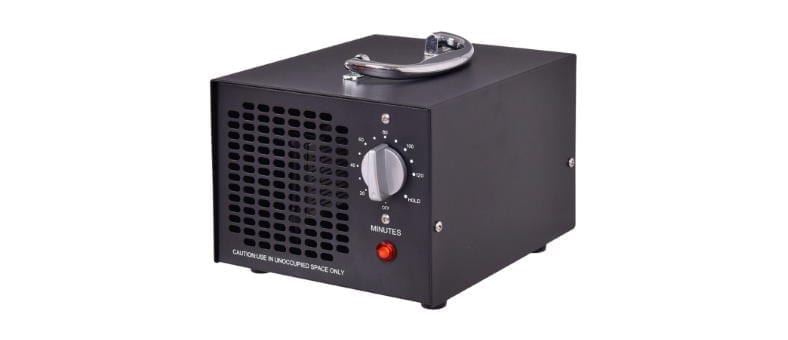
Products that produce ozone (sometimes with misleading and fancy words, but still ionizers or ozone generators in reality) sold as “air purifiers” aren’t good to leave running all day. Ozone is an irritant to the human respiratory system and can even cause health issues or at least discomfort.
They’re not even very good at cleaning the air unless they produce an unsafe amount of ozone! You definitely also wouldn’t want to fall asleep in the same room with this type of purifier on all night.
Leaving one of these running continuously will cause a large build up of ozone molecules in the air your breath, making the problem even worse. They’re not intended to be used for spaces occupied by people but unfortunately, a lot of manufacturers won’t tell you that.
How can you turn off a purifier while you’re out?
The great news is that you don’t have to be home to let your air be cleaned or worry about forgetting to turn it off if you need to. Why not just make life easier and use a timer or remote control? Here are some ideas that provide a way to not have to stress over turning them on or off:
- Buy a purifier with an auto-off timer feature.
- For standard models, you can turn them on/off with an outlet timer.
- You can use a WiFi/internet-based outlet or purchase a purifier with Wifi control for smartphone control while you’re away.
Of the 3 listed here, #2 works with any appliance with an electrical cord. Outlet timers are also very affordable. They’re a great way to keep the air clean without having to touch a thing. Air purifiers with timers are great and easy to use as well, but you’ll have to remember to turn the feature on.
Purifiers with Wifi connectivity and smartphone control are relatively new but offer excellent convenience. You can even get a report about your home’s air quality while you’re away!
How long does it take an air purifier to clean a room?
In this diagram, you can see how to figure out a room’s size in square feet (for the floor) or the total room air volume size in cubic feet. Once you know this, you can easily figure out how long it will take your air purifier to clean the air in a room. That depends on what specifications the manufacturer provides.
Air purifier manufacturers usually, but not always, include one or more specifications that tell you both their recommended room size (usually in square feet) and/or the amount of air they can move in one minute (CFM, or cubic feet per minute). The best air purifier brands include lab-tested Clean Air Delivery Rate (CADR) with their products.
CADR ratings also describe how efficiently a purifier can get rid of air particles; for these tests, smoke, dust, and pollen particles are measured.
The amount of time it takes an air purifier to clean a room depends on the purifier’s airflow (CFM/CADR rating) and the fan setting. Note that the CADR rating is based on the highest setting the purifier has.
This time ranges often from about 20 minutes to 2 hours, depending on the product as well as whether or not you’re using it at a lower fan speed. Using a quieter (lower speed) fan setting will increase the time by at least several times.
Example of how to find the time a purifier takes to clean a room
Let’s say you have a room with a size of 10 x 16 x 8 (width x length x height). That’s 10 feet x 16 feet x 8 feet = 1,280 ft^3 (cubic feet). Let’s pick a popular air purifier called the GermGuardian AC4825 with a smoke CADR rating of 108.
Therefore, the time it would take to cycle the room air is:
1,280 / 108 = 11.9 (about 12 minutes)
For using other fan settings, some rough estimates would be:
- Medium speed: (say 1/2 of high) about 2x the time, or close to 30 minutes.
- Low speed: (let’s say that’s 1/5 of high) about 5 x the time, or about 1 hour.
- Ultra-low speed/sleep mode: let’s say that’s about 1/20th the fan rate: about 20x the time (nearly 2 hours).
How to pick the correct air purifier for a room
Example of a real Clean Air Delivery Rate label from a major manufacturer. This helps you shop for the correct product for a given room size, both with the recommended room size and the smoke rating.
The Association of Home Appliance Manufacturers (AHAM) recommends choosing an air purifier with a smoke CADR rating that’s at least 2/3 the room’s floor area in square feet. Many manufacturers also include a recommended room size to make shopping easy. (Note that the 2/3 rule assumes a room height of about 8 feet)
If you’ve only got the CADR rating here’s how to do this:
How much electricity does an air purifier use?
Example power use measurements for a larger-room air purifier, the Winix HR900. It uses a similar amount of electricity to other products I’ve tested, too.
The amount of electricity used by an air purifier depends on several things, but based on measurements I’ve made for a range of products, here are typical ranges of use:
- Standby/off: 0 to about 1W.
- Ultra-quiet/sleep mode: around 5 watts.
- Low speed: about 8 to 15 watts
- Medium: about 15W – 25W
- High or turbo mode: about 45 to 55W.
Overall, there’s very little power use for the most common settings: low and medium. Even very large room purifiers with a really powerful fan still use a very moderate amount – about the same as a ceiling fan.
How much does it cost to run an air purifier?
We can figure out how much energy air purifiers use by the day, week, month, and even year. Then we can estimate (fairly accurately) how much it costs to run one all the time.
To do so, we can use some estimate numbers and also we need to know roughly how much our electrical utility charges. Power companies typically charge a rate called cents per KiloWatt-hour. A kilowatt-hour is just the amount of power used by appliances times the time they’re running.
That serves as a useful way to figure out the math.
Estimating how much it costs to run an air purifier
Let’s take an example based on the way most people would use air purifiers. Let’s use the following numbers:
- Fan speed & power use (estimates): 9 hours on low (overnight) at 15W, and 15 hours (during the day) on medium at 25W, for a total of 24 hours.
- Georgia, USA average electricity cost: $0.1101 per Kilowatt-hour (kWh).
Based on this, here’s a convenient table showing how much it costs to run an air purifier.
Air purifier use cost table
| Time | Cost |
|---|---|
| 24 hours | $0.05616 |
| 1 week | $0.39 |
| 1 month | $1.74 |
| 1 year (365 days) | $20.50 |
As you can see, it’s very cheap to use yours 24 hours a day. That of course would go up a little bit if it’s left running on the highest speed but nothing worth worrying about. Clean air really is affordable after all!
